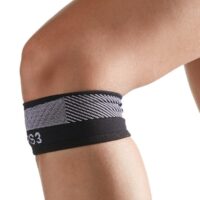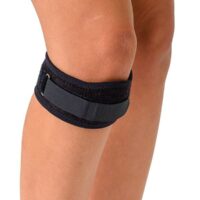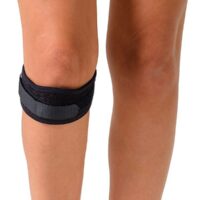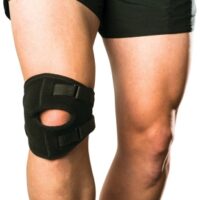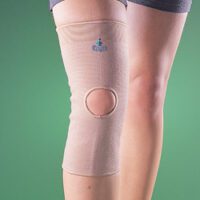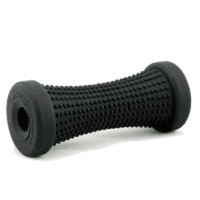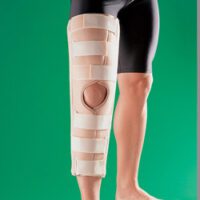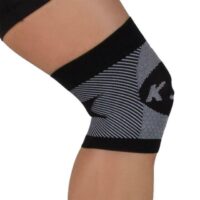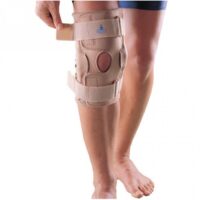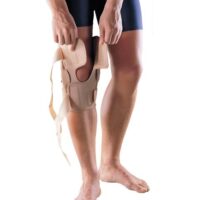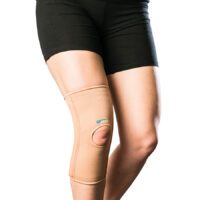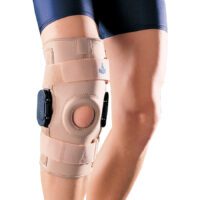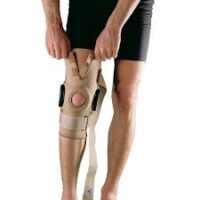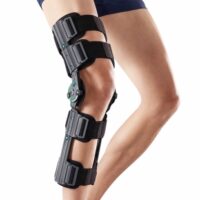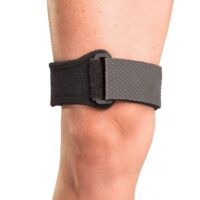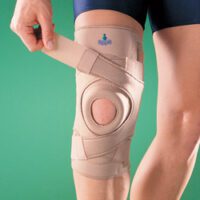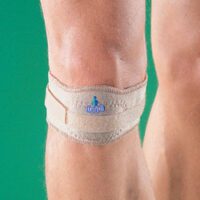Knee Arthritis
Article by John Miller
Knee Arthritis
The Osteoarthritis of the Knee Clinical Care Standard provides essential guidance for healthcare providers on managing knee osteoarthritis, a condition that significantly impacts over 1.2 million Australians. Released on 15 August 2024, the revised standard aims to improve the quality and consistency of care delivered to patients, focusing on enhancing symptom control, joint function, and overall quality of life.
What is Knee Osteoarthritis?
Knee osteoarthritis is a chronic joint condition affecting millions of Australians. It leads to pain, reduced mobility, and a significant decline in the quality of life. Though common, managing knee osteoarthritis effectively requires a thorough understanding of its causes, symptoms, and treatment options.

Why Does Knee Osteoarthritis Occur?
Knee osteoarthritis develops due to the gradual wear and tear of cartilage in the knee joint. Over time, the cartilage deteriorates, causing bones to rub against each other. This friction leads to pain, stiffness, and swelling, which worsen as the condition progresses. Factors such as ageing, obesity, joint injuries, and genetics can increase the risk of developing knee osteoarthritis.
How is Knee Osteoarthritis Diagnosed?
Diagnosing knee osteoarthritis involves a comprehensive assessment by a physiotherapist. This includes a detailed medical history, physical examination, and evaluation of the patient’s symptoms and functional limitations. Imaging, such as X-rays, may be used to confirm the diagnosis if necessary, but advanced imaging like MRI or CT scans is typically not required unless other conditions are suspected.
What are the Symptoms of Knee Osteoarthritis?
Common symptoms include persistent knee pain, stiffness, swelling, and reduced range of motion. These symptoms often worsen with activity and improve with rest. In advanced cases, knee osteoarthritis can severely limit daily activities, making it challenging to walk, climb stairs, or even stand for extended periods.
How Can Knee Osteoarthritis Be Managed?
Managing knee osteoarthritis focuses on relieving symptoms and improving joint function. Treatment plans should be holistic, addressing both physical and psychological aspects. Key management strategies include:
Key Quality Statements
- Comprehensive Assessment and Diagnosis
Patients with suspected knee osteoarthritis should undergo a thorough, person-centred assessment, including medical history, physical examination, and psychosocial evaluation. This helps healthcare providers diagnose osteoarthritis accurately and recommend appropriate treatments. - Appropriate Use of Imaging
Imaging is not routinely required to diagnose knee osteoarthritis. X-rays may be used if clinically necessary, but advanced imaging like MRI or CT scans is not recommended. Healthcare providers should focus on a patient’s symptoms and functional limitations rather than imaging results. - Education and Self-Management
Patients should be provided with information about osteoarthritis and be actively involved in creating a self-management plan. This plan should address physical, functional, and psychosocial needs, including lifestyle changes like exercise and weight management. - Physical Activity and Exercise
Staying active is crucial for managing knee osteoarthritis. Healthcare providers should encourage patients to set goals and participate in suitable physical activities. Exercise can reduce pain, strengthen muscles, and improve mobility, even in severe cases. Seek the professional advice of your physiotherapist to get you started. - Weight Management and Nutrition
Maintaining a healthy weight can significantly reduce the symptoms of knee osteoarthritis. Patients should be supported in setting weight management goals and offered referrals to dietitians or weight management programs if needed. - Medicines for Pain and Mobility
Medicines can help manage pain and improve mobility but should not replace other treatments like exercise and weight management. Opioids are not recommended due to their risks. Patients should receive clear guidance on using medications effectively. - Patient Review
Regular check-ups are essential to monitor symptoms and adjust treatments as needed. Patients with worsening symptoms despite optimal non-surgical management should be referred to a specialist for further evaluation. - Surgery
Surgery may be considered for patients with severe impairment after non-surgical treatments have been exhausted. Knee replacement is common, but joint-conserving surgeries like osteotomy may also be options. Patients should receive comprehensive information to make informed decisions.
The revised Osteoarthritis of the Knee Clinical Care Standard is a vital tool in ensuring consistent, high-quality care for Australians with knee osteoarthritis. By following these guidelines, healthcare providers can help patients manage their symptoms, improve their quality of life, and reduce the need for invasive procedures.
The Role of a Physiotherapist in Managing Knee OA
Physiotherapists play a pivotal role in managing knee arthritis. They provide professional guidance on exercise programs, use therapeutic modalities to reduce pain and swelling, and offer advice on lifestyle modifications to manage symptoms effectively. Physiotherapy is essential not only for managing knee arthritis but also for post-surgical rehabilitation to restore knee function and mobility.
Recent Research in Knee Arthritis Treatment
Recent advancements in knee arthritis treatment have focused on early intervention, patient-specific exercise programs, and non-invasive treatments to delay or avoid the need for surgery. Studies have shown that a combination of strength training, aerobic exercises, and weight management can significantly improve symptoms and quality of life for individuals with knee arthritis.
The Role of Exercise Therapy in Managing Knee Osteoarthritis
Exercise therapy stands as the first line of treatment for knee and hip osteoarthritis (OA), yet it remains underutilised. Recent studies underscore the importance of incorporating exercise therapy into the management plans for OA patients. This approach is not only safe for joint structures and overall patient health but is also effective regardless of disease severity or the presence of other health conditions.
Effectiveness and Safety of Exercise Therapy
A wealth of evidence indicates that exercise therapy significantly improves patient outcomes in knee and hip OA. It has been shown to be a safe treatment option, posing no undue risk to joint structures or overall health. Systematic reviews consistently reveal that all types of exercise therapy are likely to be beneficial, although no single type of exercise has been found to be superior to others.
Personalised Exercise Therapy for OA Patients
It is crucial for healthcare practitioners to encourage OA patients to include exercise therapy in their treatment plans. The assurance of its safety and potential for improving critical patient outcomes makes it a valuable component of OA management. Given the lack of evidence for the superiority of any single exercise program, the choice of specific exercise therapy should be guided by patient preference and lifestyle factors. This personalised approach, part of a shared decision-making process, ensures that the exercise regimen aligns with the individual’s needs, preferences, and lifestyle, thereby enhancing its effectiveness and adherence.
Conclusion
Knee arthritis, particularly Knee OA, is a prevalent condition that can significantly impact your quality of life. Understanding the causes, symptoms, and treatment options is crucial for effective management. Regular consultation with a physiotherapist can provide tailored advice and treatment plans, ensuring the best possible outcomes.
If you’re experiencing symptoms of knee arthritis, don’t hesitate to seek professional advice. A qualified physiotherapist can guide you through a personalised treatment plan, ensuring you maintain mobility and reduce pain effectively. Remember, early intervention is key to managing knee arthritis effectively.
Rochedale - Call 38410277
Book Online: RochedaleSalisbury - Call 32751044
Book Online: SalisburySandgate - Call 32691122
Book Online: SandgateRelated Articles
- Knee Pain: Causes and Treatment Options – Readers will find comprehensive insights into various causes of knee pain and effective treatment strategies.
- Managing Osteoarthritis: Effective Approaches – This article offers valuable information on managing osteoarthritis, with a focus on knee OA.
- Exercise Therapy for Knee Conditions – Highlights the benefits and techniques of exercise therapy specifically for knee-related conditions.
- Physiotherapy for Knee Injuries: A Guide – Outlines the role of physiotherapy in treating various knee injuries, relevant to those with knee arthritis.
- Surgical Treatment for Knee Arthritis – Discusses surgical interventions available for managing knee arthritis.
- Knee Braces: Types and Usage – Explains different types of knee braces and their applications in knee arthritis management.
- Total Knee Replacement – Understand the process, risks, and benefits of total knee replacement surgery.
- Rehabilitation After Surgery – Offers insights into post-surgery rehabilitation, crucial for those considering surgical options for knee arthritis.
- Joint Pain and Physiotherapy – Find out how physiotherapy can help relieve joint pain and improve mobility.
- Understanding Knee Osteoarthritis – Mayo Clinic – Explore comprehensive information on knee osteoarthritis, including causes, symptoms, and treatment options.
- Knee Osteoarthritis Management – Arthritis Foundation – Learn about managing knee osteoarthritis with a focus on lifestyle changes and non-surgical treatments.
- Latest Research on Knee Osteoarthritis – PubMed – Discuss the newest findings on knee osteoarthritis treatments and the impact of early intervention.
Social Media – Follow Us for Free Tips
For tips on managing knee osteoarthritis and other joint conditions, follow us on our social media platforms. Stay updated with the latest advice, exercises, and treatment options tailored to your needs.












